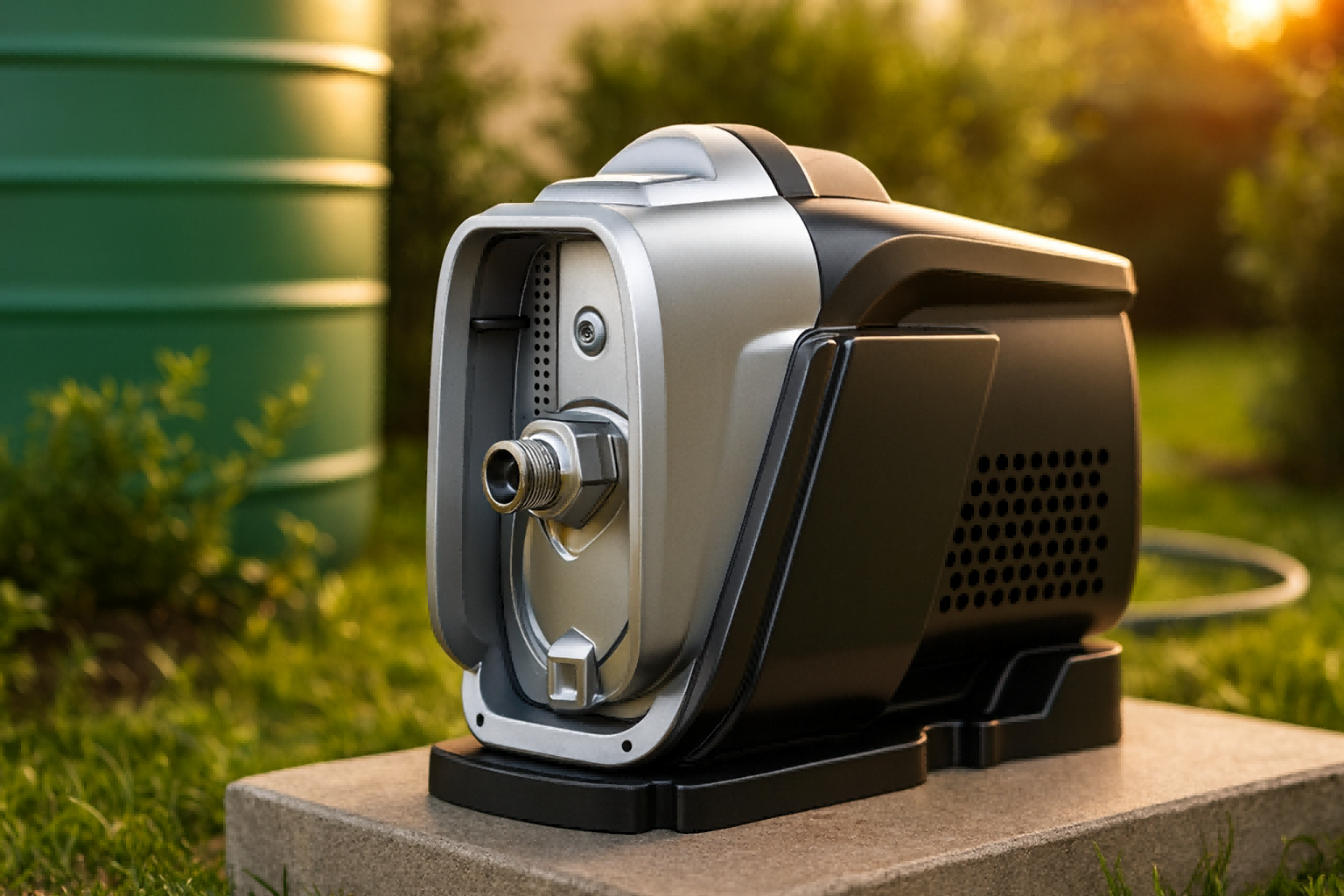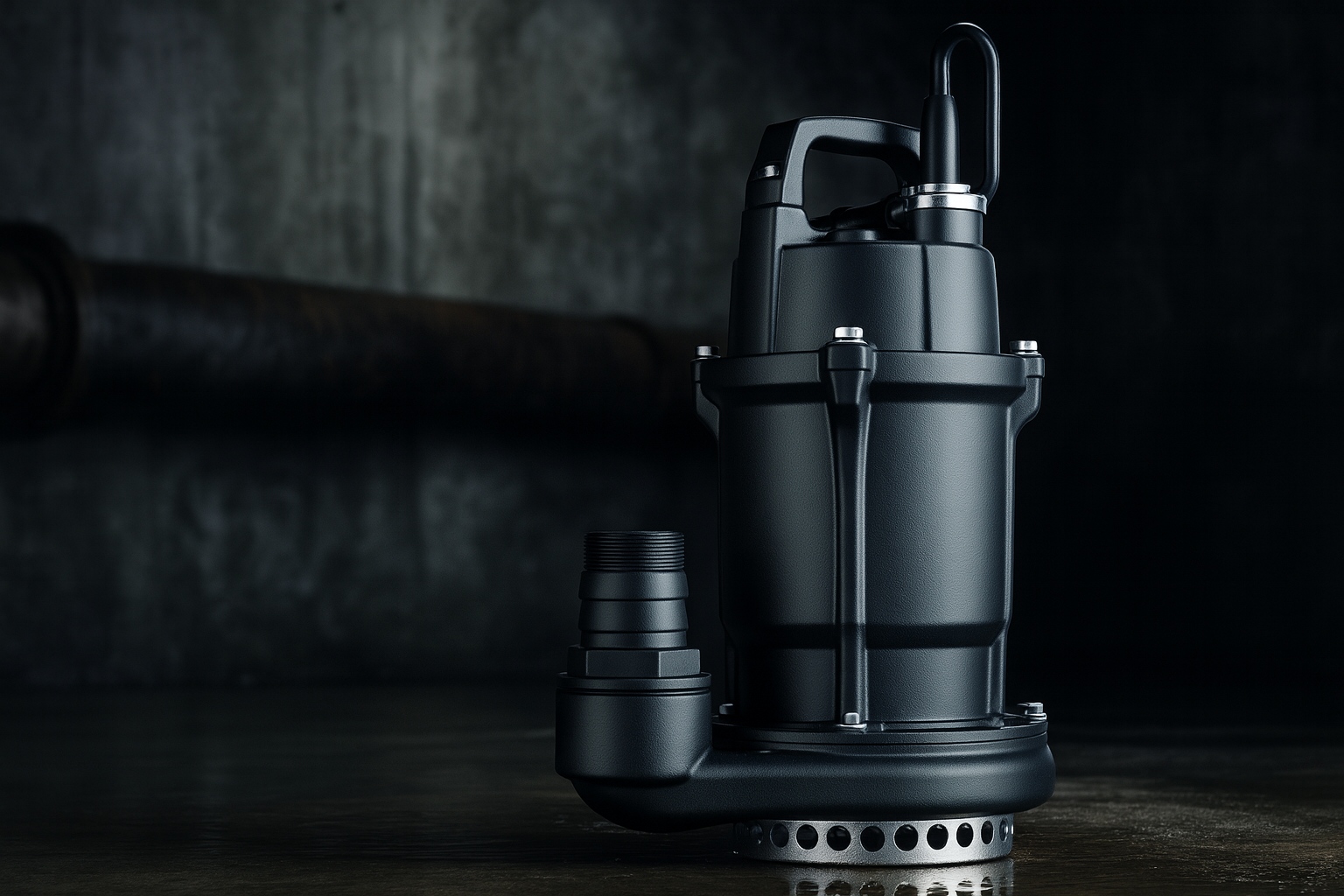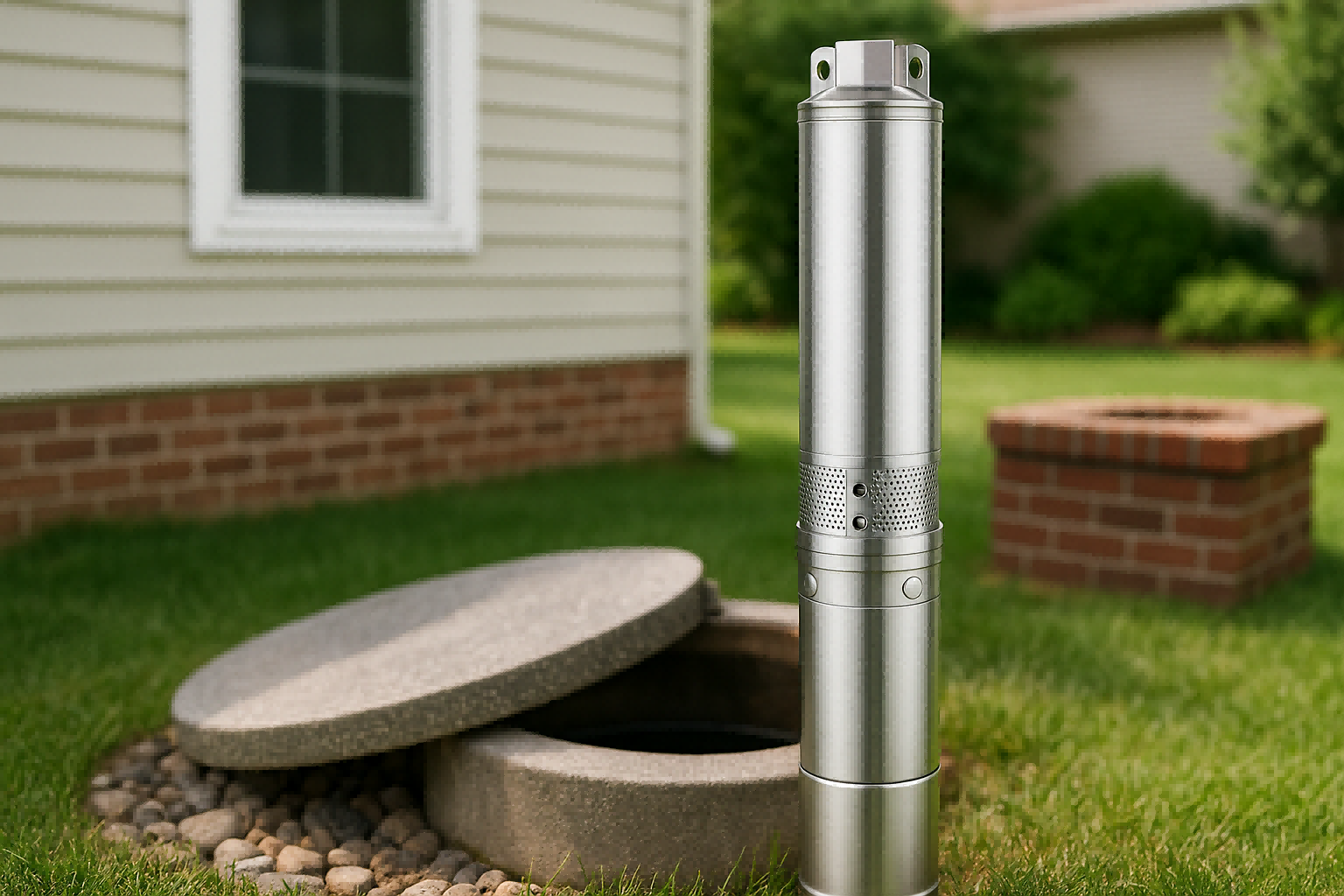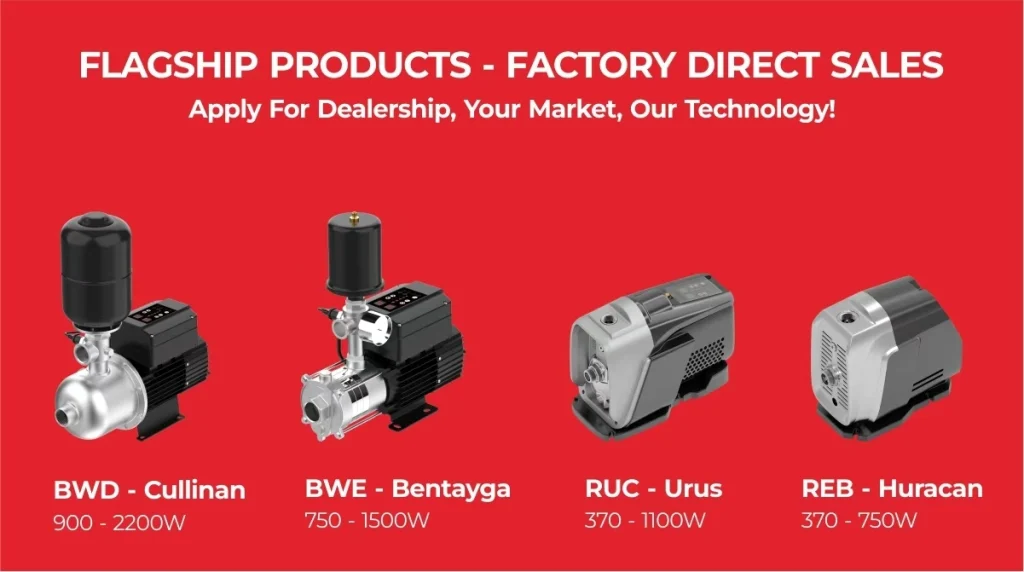Struggling with weak water flow from your tank?
This means low pressure for showers and slow-filling appliances.
You need a reliable solution to boost your water supply effectively.
A water tank pump, also known as a pressure pump, is a device that pushes water from your storage tank. It creates pressurized water flow for use in your home or garden. This ensures you have strong, consistent pressure at all your taps and appliances.

Choosing the right pump is crucial for your home's water system.
It involves more than just picking a model off the shelf.
You need to understand the different types available and which features will best serve your specific needs.
This guide will walk you through the key differences and considerations.
We will explore everything from pump types to advanced features, helping you make an informed decision for consistent and efficient water pressure.
External Water Tank Pumps Vs Submersible Water Tank Pumps
Unsure whether to install your pump inside or outside your tank?
This choice impacts noise, cost, and maintenance.
Making the wrong decision can lead to future headaches and expenses.
An external pump is positioned outside the tank, while a submersible pump operates inside the tank, submerged in water. External pumps are easier to access for maintenance, whereas submersible pumps are significantly quieter and often more energy-efficient due to their design.
The debate between external and submersible pumps is a common one for homeowners.
Each type comes with a distinct set of advantages and disadvantages.
Understanding these differences is the first step toward selecting a pump that aligns with your budget, performance expectations, and living situation.
Let's dive deeper into what sets these two pump types apart.
Understanding External Pumps
External pumps are the most common choice for residential rainwater tanks.
They are also known as above-ground or surface pumps.
As the name suggests, they are installed on a solid base next to the water tank.
These pumps work by sucking water from the tank and then pushing it toward the house.
Because they are exposed, it's highly recommended to protect them with a pump cover.
A cover shields the unit from sun, rain, and dust, which extends its lifespan.
It also helps to reduce the operating noise.
Understanding Submersible Pumps
A submersible pump is designed for a completely different approach.
It is placed directly inside your water tank, fully submerged in the water it pumps.
Water is drawn in and pushed vertically up through a pipe that exits the top of the tank.
The entire unit, including the motor, is sealed in a waterproof casing.
This design is key to its functionality and is the main reason for its primary benefits, such as quiet operation.
Head-to-Head Comparison
Choosing between the two types involves a trade-off.
Your priorities will determine which pump is the better fit for you.
Here’s a breakdown of how they compare across key factors:
| Feature | External Pump | Submersible Pump |
|---|---|---|
| Noise Level | Louder; operates in the open air. | Very quiet; submerged in water which absorbs sound. |
| Price | Generally more affordable upfront. | More expensive due to waterproof casing and design. |
| Maintenance | Easier to access for service and repairs. | Requires removing from the tank for maintenance. |
| Energy Use | Uses more energy to suck and push water. | More efficient; only needs to push water upward. |
| Durability | Vulnerable to weather without a cover. | Waterproof seals can corrode over time. |
| Tank Space | Does not take up space inside the tank. | Reduces tank's water capacity slightly (up to 50L). |
Key Considerations for Your Choice
Think about your specific location and needs.
If your tank is located near a bedroom or a neighbor's property, the quiet operation of a submersible pump might be a top priority.
However, if you prefer easy access for maintenance and a lower initial cost, an external pump is a strong contender.
Also, consider your tank's size.
For smaller tanks, the space a submersible pump occupies might be a significant loss of water storage capacity.
Things to Consider When Buying a Water Tank Pump
Are you overwhelmed by the technical specifications on pump labels?
You might end up with a pump that is too weak or too powerful.
This can result in either poor performance or wasted electricity and money.
When buying a water tank pump, you must consider the distance water needs to travel, your desired water pressure (LPM), the pump's noise level, and its energy consumption. Matching these factors to your home’s needs ensures optimal performance and efficiency.
Selecting the ideal water tank pump is a balancing act.
It's not about finding the most powerful or the cheapest option.
It's about finding the one that is perfectly sized for your specific household or garden requirements.
A well-chosen pump will provide you with reliable water pressure without inflating your electricity bills.
Let's explore the essential factors you need to evaluate to make the right choice.
Calculating Your Water Pressure Needs
Water pressure is measured in litres per minute (LPM).
This figure tells you how much water a pump can deliver in a given time.
First, identify all the outlets you might use simultaneously.
A typical household might have a shower, a washing machine, and a toilet running at the same time.
You need to estimate the flow rate required for each appliance.
Here are some common approximate flow rates:
- Shower: 15-20 LPM
- Washing Machine: 10-15 LPM
- Toilet Cistern: 5-10 LPM
- Kitchen Tap: 10-15 LPM
- Garden Hose: 15-20 LPM
Add up the LPM for all the outlets you expect to use at once.
If you plan to shower (20 LPM) while the washing machine is on (15 LPM), you need a pump that can deliver at least 35 LPM.
Always look for the pump’s "Max Flow" or "Max LPM" specification and ensure it meets or exceeds your calculated total.
This ensures you won't experience a frustrating drop in pressure when multiple taps are open.
Factoring in Distance and Height (Head Pressure)
The distance and elevation the pump must move water are critical.
This is referred to as "head" or "head pressure".
It's the vertical height the pump can push water against gravity.
If your tank is far from your house or if you live in a multi-story home, you need a pump with a higher head pressure rating.
A pump needs enough power to overcome both the horizontal distance and the vertical lift to the highest floor.
Generally, for a standard home, a pump with a head pressure of 20-50 meters is sufficient.
Check the pump’s specifications for "Max Head".
This number indicates the maximum height it can pump water to, at which point the flow rate would be zero.
Your required head should be well below the pump's maximum for effective flow.
Managing Water Pump Noise
Pump noise can be a significant disturbance, especially if the tank is near living areas.
As discussed, submersible pumps are the quietest option.
They operate under the water, which naturally dampens the sound.
For external pumps, noise levels can vary.
You can significantly reduce noise by installing a dedicated pump cover.
These enclosures are designed to muffle the sound while protecting the pump from the weather.
When using a cover, ensure there is adequate ventilation.
Pumps generate heat, and poor airflow can cause the motor to overheat, shortening its lifespan.
Advanced Features in Modern Water Pumps
Are you concerned about your pump wasting energy or failing unexpectedly?
Traditional pumps run at full speed every time, causing wear and high electricity bills.
They lack the intelligence to protect themselves from common issues like running dry.
Modern pumps use Variable Frequency Drive (VFD) technology to deliver constant pressure while cutting energy use by up to 50%. They also feature smart protections against dry-running, overheating, and voltage issues, ensuring a longer, more reliable lifespan for the pump.
The technology behind water pumps has evolved significantly.
Today's advanced pumps are not just motors that push water; they are intelligent systems.
They are designed for peak efficiency, unmatched durability, and user-friendly operation.
These innovations address the classic problems of high energy consumption, loud noise, and premature failure.
Let's explore the cutting-edge features that set modern pumps apart.
Core Drive Technology and Performance
The heart of a modern high-efficiency pump is its advanced motor and control system.
Many top-tier models now use a Permanent Magnet Synchronous Motor (PMSM).
This type of motor is more efficient and powerful than traditional induction motors.
It works together with a Variable Frequency Drive (VFD) controller.
The VFD adjusts the motor's speed in real-time based on water demand.
This VFD and PMSM combination provides several key benefits:
- Constant, Stable Pressure: The VFD ensures that whether one tap is open or five, the water pressure remains steady and does not fluctuate.
- Ultra-Quiet Operation: The precise control and advanced motor design can reduce operating noise to levels below 50dB, which is quieter than a library.
- Soft Start & Stop: The pump gradually ramps up and down. This reduces mechanical stress on the pump and prevents "water hammer," a jarring bang in your pipes caused by sudden pressure changes. This function is crucial for protecting your entire plumbing system.
- Energy Savings: By running only at the speed needed, a VFD pump can reduce electricity consumption by 50% or more compared to a fixed-speed pump.
Uncompromising Durability and Reliability
Manufacturers now focus heavily on building pumps that last.
This involves using superior materials and incorporating robust protection mechanisms.
One of the most significant advancements is in protecting the electronics.
The main controller circuit board (PCB) is often fully sealed in a resin compound.
This "potting" process makes the electronics completely waterproof (IP67 rated).
It protects the sensitive components from moisture, dust, and condensation, which are common causes of failure.
This single feature can extend the controller's life by several years.
Material selection is also critical.
High-end pumps use components made from corrosion-resistant materials.
| Component | Premium Material | Benefit |
|---|---|---|
| Impeller | AISI 304 Stainless Steel | Excellent resistance to rust and wear, ensuring long-term hydraulic performance. |
| Housing | UV-Resistant ABS Plastic | Protects the pump's exterior from sun damage and cracking over time. |
| Motor Bearings | High-Precision (NSK/C&U) | Quieter operation, less friction, and a significantly longer lifespan. |
Finally, superior cooling design helps the motor run cooler.
Better airflow and heat dissipation mean the components operate under less thermal stress, directly contributing to a longer and more reliable service life.
The "Smart Shield": Comprehensive Protection Systems
The intelligence of a modern pump lies in its suite of self-protection functions.
These systems constantly monitor operating conditions and can shut down the pump to prevent damage.
This makes the pump far more resilient to common plumbing and electrical problems.
A comprehensive protection system can include up to 14 different safeguards:
Electrical & Thermal Protections
- Input Over-Voltage Protection
- Input Under-Voltage Protection
- Overcurrent Protection
- Phase Loss Protection
- Motor Stall Protection
- Driver Board Overheating Protection
System & Sensor Protections
- Water Shortage (Dry Run) Protection
- High Water Temperature Protection
- Antifreeze Protection (for cold climates)
- Pipeline Leak Warning
- Pressure Sensor Failure Warning
- Water Temperature Sensor Failure Warning
- Motor Temperature Sensor Warning
- Short-Time Overheating Protection
The dry-run protection is particularly clever.
If the pump detects no water, it doesn't just shut off.
It will attempt to restart after a few minutes, then after longer intervals, to see if the water supply has returned.
This avoids burnout while ensuring the system can recover automatically.
Conclusion
Choosing the right water tank pump involves balancing performance, cost, and features.
Understanding the differences between types and considering your specific needs is key to a reliable and efficient home water system.
FAQs
What is the best pump for a water tank?
The best pump depends on your needs. Submersible pumps are quiet and efficient, while external pumps are cheaper and easier to maintain. Consider noise, budget, and accessibility.
How do I choose a water pump for my house?
Calculate your required water pressure (LPM) by adding up the flow rates of appliances you'll use at once. Also, consider the distance and height the water must travel (head).
Do I need a pump for my rainwater tank?
Yes, if you want to use the tank water for your house or garden. A pump is needed to create enough pressure for taps, showers, and appliances to work correctly.
What size water pump do I need?
Size is determined by flow rate (LPM) and head pressure (meters). A typical home needs 20-40 LPM and 20-50 meters of head, but you should calculate your specific requirements.
How long should a water tank pump last?
A quality water pump should last 8-10 years or more with proper installation and maintenance. Features like soft start and electronic protections can significantly extend its lifespan.
Can a water pump be too powerful?
Yes. An oversized pump will cycle on and off frequently, causing premature wear and wasting electricity. It's better to choose a pump that closely matches your household's demand.
What is a VFD water pump?
A VFD (Variable Frequency Drive) pump adjusts its motor speed to maintain constant water pressure, regardless of how many taps are open. This makes it highly energy-efficient and quiet.
What happens if a pump runs without water?
Running without water, known as running dry, can cause a pump to overheat and fail quickly. Modern pumps have dry-run protection that automatically shuts them off to prevent damage.








